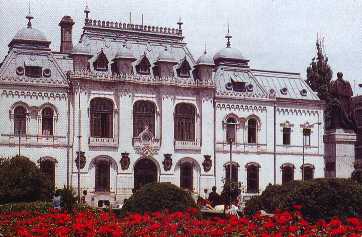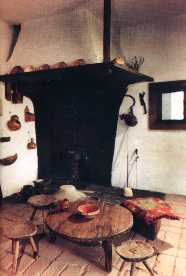 A
part of the old Oltenia, the Dolj county has 3, l percent of Romania's
surface and is on the fourth place concerning the population.
A
part of the old Oltenia, the Dolj county has 3, l percent of Romania's
surface and is on the fourth place concerning the population.
Craiova is the capital city.
Most of its territory is a plain crosses by seven rivers and the Danube River with Bistret Lake to the South (1,867 ha).
The name of this county is given by the Jiu River which crosses it from North to South, Dolj meaning "the Lower Jiu Land". Its first documentary attestation as a county dates back in 1444 when its name was the Balta county situated in the Danube Plain.
In the Dolj county a lot of Romanian political, scientific and cultural personalities were born or lived:Voivode Mihai the Brave who united the three Romanian Lands for the first time; great revolutionists Tudor Vladimirescu and Nicolae Balcescu; painters Theodor Aman, Constantin Lecca and Ion Tuculescu and sculptor Gheorghe Anghel; Constantin Brancusi stated his fly to infinite here too; mathematicians Gheorghe Titeica, inventor Gogu Constantinescu; writers Traian Demetrescu, Alexandru Macedonski and Elena Farago and world famous diplomat Nicolae Titulescu.
The tourist potential of this county consists in the value and variety of its traditional and modern historic, cultural and art monuments, the numberless nature monuments, reservations, hunting grounds and picturesque landscapes, and rich flora and fauna.
 This
county is also the crossroad of some important national and international
tourist routes. Also many motorways and railways make possible the access
to some picturesque zones as Portile de Fier or to the counties of Valcea
and Gorj as well as to the Parang Mountain, to the North and the Danube,
to the South.
This
county is also the crossroad of some important national and international
tourist routes. Also many motorways and railways make possible the access
to some picturesque zones as Portile de Fier or to the counties of Valcea
and Gorj as well as to the Parang Mountain, to the North and the Danube,
to the South.
By the railway Bucharest-Craiova-Timisoara-Jimbolia the connection with Serbia is done through the frontier points of Portile de Fier, and Stamora-Moravila and from Calafat and Bechet the connection with Bulgaria is done too.
Near by towns there are picturesque and interesting zones. Near by Craiova there are the Bucoval, Ciutura and Bratovoesti forests. Near by Filiasi there are the Negaia and Burgetelu forests; near by Plenita - the Bujor Forest; in Bailesti - the Cilieni zone and Calafat is the gate to Danube area which is rich in fish.
An important attraction is the Romanescu Park (People's Park) in Craiova - one of the valuable monuments of landscape architecture in Romania. It consists in 96 ha of forests, 4 ha of lakes, a zoo, landing place, two restaurants, and over 250 species of trees and busches.